-
 Bitcoin
Bitcoin $95,910.4843
-0.75% -
 Ethereum
Ethereum $2,807.9445
1.41% -
 XRP
XRP $2.5698
-0.59% -
 Tether USDt
Tether USDt $1.0003
0.01% -
 BNB
BNB $655.3695
-2.25% -
 Solana
Solana $167.8556
-2.92% -
 USDC
USDC $1.0000
0.00% -
 Dogecoin
Dogecoin $0.2425
-1.70% -
 Cardano
Cardano $0.7670
-1.13% -
 TRON
TRON $0.2451
3.79% -
 Chainlink
Chainlink $17.5572
-1.42% -
 Sui
Sui $3.3426
-1.76% -
 Avalanche
Avalanche $24.6999
-4.52% -
 Stellar
Stellar $0.3325
-0.43% -
 Litecoin
Litecoin $128.8138
1.51% -
 Toncoin
Toncoin $3.7527
0.57% -
 Shiba Inu
Shiba Inu $0.0...01542
-1.49% -
 UNUS SED LEO
UNUS SED LEO $9.7647
0.52% -
 Hedera
Hedera $0.2098
-2.89% -
 MANTRA
MANTRA $8.4900
12.59% -
 Hyperliquid
Hyperliquid $23.1401
-6.64% -
 Polkadot
Polkadot $4.9289
-2.71% -
 Bitcoin Cash
Bitcoin Cash $326.8969
1.52% -
 Bitget Token
Bitget Token $5.1321
3.64% -
 Ethena USDe
Ethena USDe $1.0003
0.08% -
 Uniswap
Uniswap $8.9811
-1.07% -
 Dai
Dai $0.9999
-0.02% -
 Monero
Monero $235.2340
1.36% -
 NEAR Protocol
NEAR Protocol $3.4313
-1.82% -
 Pepe
Pepe $0.0...09317
-3.55%
What is the consensus mechanism of Oasys (OAS) coin?
In Oasys' Delegated Proof-of-Stake consensus model, token holders delegate voting power to validators who secure the network and earn block rewards and transaction fees.
Dec 19, 2024 at 02:36 am

Key Points:
- Proof-of-stake (PoS) consensus mechanism
- Validating nodes participate in transaction verification and block production
- Delegated Proof-of-Stake (DPoS) model
- Token holders can delegate their voting power to validators
- Validators are rewarded with block rewards and transaction fees
Consensus Mechanism of Oasys (OAS) Coin
Proof-of-Stake (PoS) Consensus Mechanism:
Oasys (OAS) coin utilizes a Proof-of-Stake (PoS) consensus mechanism. PoS is a type of consensus mechanism wherein transaction validation and block production are performed by validating nodes that hold a certain amount of coins as a stake within the network. In the case of Oasys, these validating nodes are responsible for securing the network, verifying transactions, and adding new blocks to the blockchain.
Delegated Proof-of-Stake (DPoS) Model:
Oasys employs a Delegated Proof-of-Stake (DPoS) model, which is a derivative of the PoS consensus mechanism. In a DPoS model, token holders have the authority to vote and elect validators who are responsible for performing the tasks of transaction validation and block production on the network.
Validator Selection and Voting:
- Validators: Validators are members of the community who stake their OAS tokens and provide computational resources to validate transactions and produce blocks. They are selected based on the number of OAS tokens they stake, their technical proficiency, and the trust of the community.
- Delegation: Token holders can delegate their OAS coins to validators of their choice, effectively giving them the power to vote on their behalf. The weight of each validator's vote is determined by the amount of tokens staked.
- Validation Reward: Validators are rewarded with block rewards and transaction fees for their services. The rewards are distributed proportionally to the amount of staked tokens and the validation effort put in by each validator. This incentivizes validators to maintain the stability and security of the network.
Advantages of Oasys' Consensus Mechanism:
- Reduced Energy Consumption: Compared to Proof-of-Work (PoW) consensus, PoS mechanisms like DPoS are more energy-efficient as they require less computational power for transaction verification and block production.
- Improved Scalability: DPoS has better scalability properties than other consensus mechanisms, allowing for higher transaction throughput and faster block confirmation times.
- Enhanced Security: The delegation of voting power to trusted validators helps to reduce the risk of malicious actors gaining control over the network, making the blockchain more secure.
FAQs:
Q: What are the risks associated with the Oasys consensus mechanism?
A: Potential risks include:
- Validator Collusion: Validators may collude to manipulate transaction validation or block confirmation.
- Delegation Risk: Delegating OAS tokens to malicious validators could lead to lost funds.
- Centralization: Over time, a few validators with significant voting power may emerge, leading to centralization within the network.
Q: How are consensus parameters, such as block size and reward distribution, determined?
A: Consensus parameters are typically governed by the Oasys community through proposals and voting. Token holders can participate in the decision-making process to adjust these parameters as needed to optimize network performance.
Q: What is the role of the community in the Oasys consensus mechanism?
A: The community plays a crucial role by participating in voting for validators, proposing and voting on consensus parameter changes, and monitoring network activity. Strong community involvement is essential for maintaining decentralization and ensuring the security and stability of the Oasys network.
Disclaimer:info@kdj.com
The information provided is not trading advice. kdj.com does not assume any responsibility for any investments made based on the information provided in this article. Cryptocurrencies are highly volatile and it is highly recommended that you invest with caution after thorough research!
If you believe that the content used on this website infringes your copyright, please contact us immediately (info@kdj.com) and we will delete it promptly.
- Onyxcoin (XCN) Price Prediction: Can it Outgpace XRP, SUI & Other Gems?
- 2025-02-24 06:50:27
- The Subtle Clash in Crypto: Is XRP Gaining Ground in a Bitcoin-Dominated Space?
- 2025-02-24 06:50:27
- Will Bitcoin's Dance with Volatility Ignite a New Altcoin Boom?
- 2025-02-24 06:50:27
- Arctic Pablo Coin Leads the Pack: Deflationary Magic, Meme Fest, and Top New Meme Coins to Invest in Now
- 2025-02-24 06:50:27
- Whales Accumulate XRP and SHIB Tokens, Signaling Strategic Bets on Undervalued Assets
- 2025-02-24 06:50:27
- IntelMarkets (INTL): A New AI-Based Trading Platform To Transform the Crypto Trading Space
- 2025-02-24 06:50:27
Related knowledge
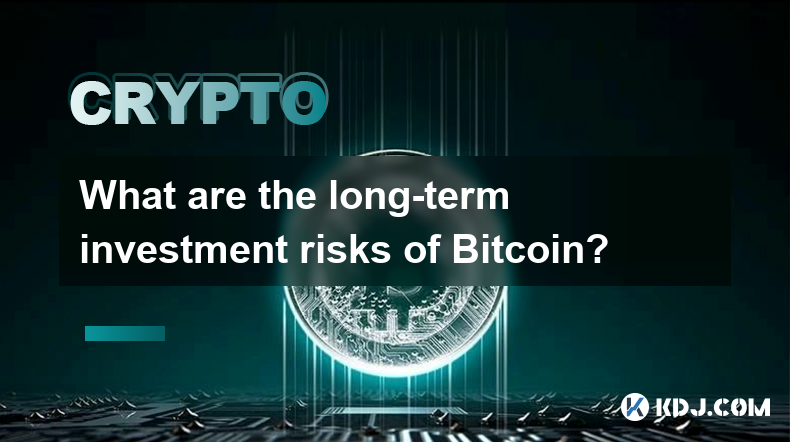
What are the long-term investment risks of Bitcoin?
Feb 22,2025 at 05:30pm
Key PointsVolatility and price fluctuationsRegulatory uncertaintySecurity risksCompetition from altcoinsMarket manipulation and scamsTransaction feesEnvironmental concernsLong-Term Investment Risks of BitcoinVolatility and Price FluctuationsBitcoin's high volatility is a double-edged sword. While it has the potential to generate substantial returns, it ...
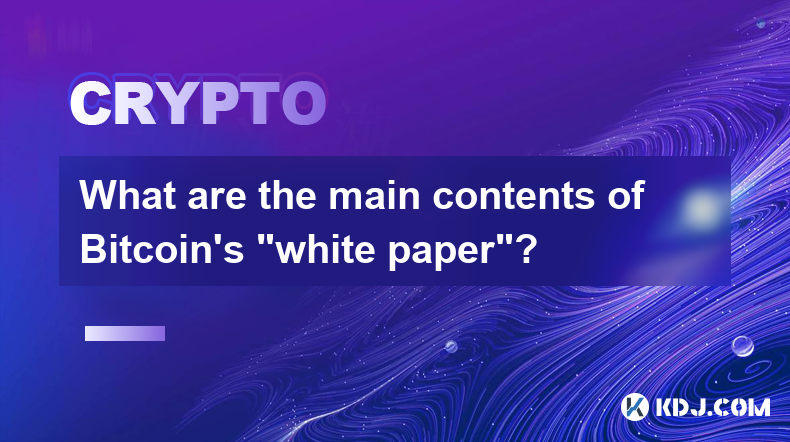
What are the main contents of Bitcoin's "white paper"?
Feb 21,2025 at 04:36am
Key Points:Understanding Bitcoin's Genesis: The White Paper's IntroductionA Decentralized Digital Currency: Bitcoin's Core ConceptBlockchain Technology: The Foundation of Bitcoin's Immutable LedgerProof-of-Work: Securing Bitcoin's NetworkThe Design of Bitcoin's Currency: Issuance, Scarcity, and DivisibilityBitcoin's Potential Applications and Future Pro...
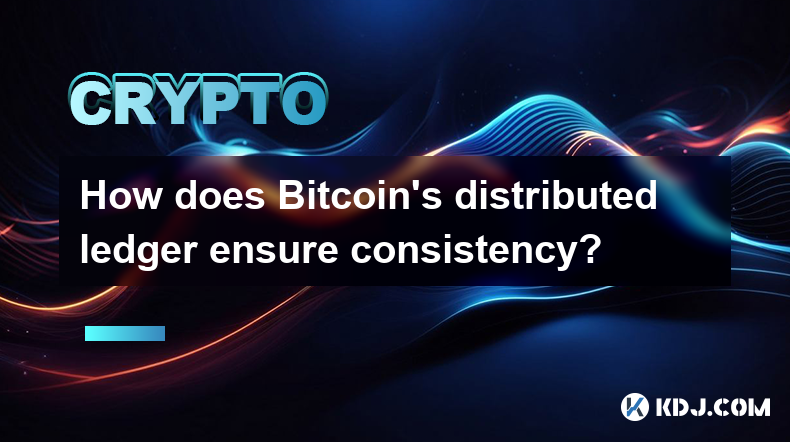
How does Bitcoin's distributed ledger ensure consistency?
Feb 22,2025 at 10:06pm
Key Points:Bitcoin employs a distributed ledger, also known as a blockchain, to maintain a tamper-proof and consistent record of transactions.The blockchain is a decentralized network of computers that collectively validate and store transaction data.Bitcoin's distributed ledger ensures consistency through consensus mechanisms and cryptographic algorith...
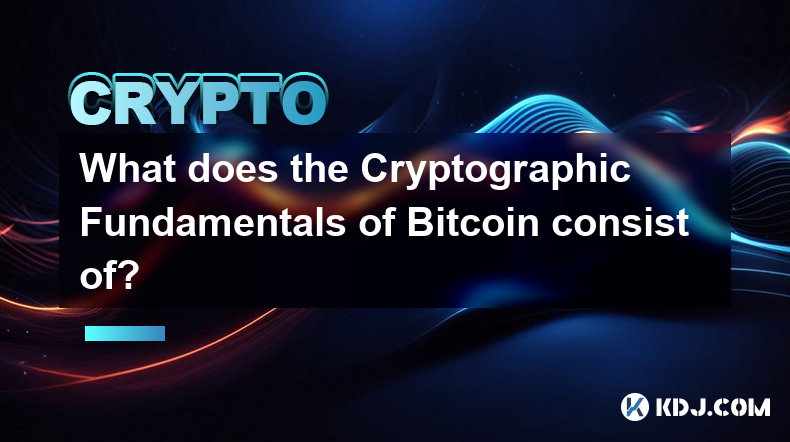
What does the Cryptographic Fundamentals of Bitcoin consist of?
Feb 21,2025 at 12:06pm
Key PointsUnderstanding the cryptographic algorithms used in BitcoinFamiliarization with the Bitcoin blockchain and its underlying mechanicsExamination of the security measures that protect Bitcoin from attackAnalysis of the decentralized nature of Bitcoin and its implicationsDiscussion of the scalability and transaction fee issues associated with Bitco...
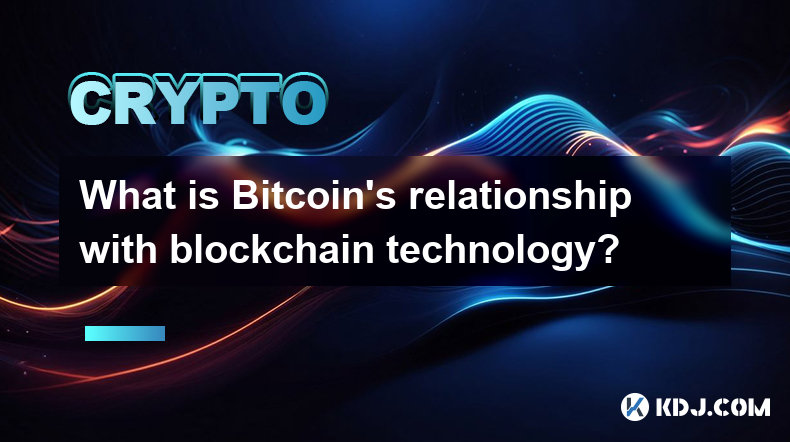
What is Bitcoin's relationship with blockchain technology?
Feb 22,2025 at 07:00pm
Bitcoin's Intertwined Relationship with Blockchain TechnologyKey Points:Definition of blockchain technology and its decentralized natureBitcoin's utilization of blockchain for secure and immutable transactionsThe role of blockchain in verifying and confirming transactionsEvolution of blockchain technology beyond Bitcoin's cryptocurrency applicationsUnde...
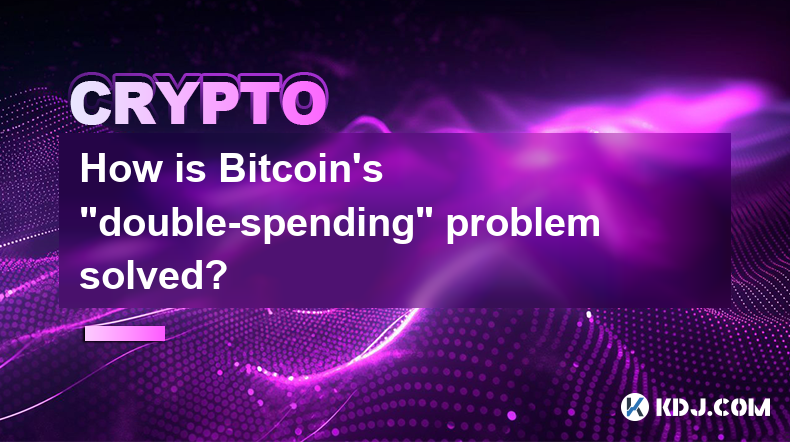
How is Bitcoin's "double-spending" problem solved?
Feb 23,2025 at 02:54am
Key Points:The double-spending problem refers to the potential for a digital currency transaction to be reversed, allowing the same funds to be spent multiple times.Bitcoin solves this problem through the use of a decentralized blockchain, a public ledger that records all transactions permanently and securely.The immutability and transparency of the blo...

What are the long-term investment risks of Bitcoin?
Feb 22,2025 at 05:30pm
Key PointsVolatility and price fluctuationsRegulatory uncertaintySecurity risksCompetition from altcoinsMarket manipulation and scamsTransaction feesEnvironmental concernsLong-Term Investment Risks of BitcoinVolatility and Price FluctuationsBitcoin's high volatility is a double-edged sword. While it has the potential to generate substantial returns, it ...

What are the main contents of Bitcoin's "white paper"?
Feb 21,2025 at 04:36am
Key Points:Understanding Bitcoin's Genesis: The White Paper's IntroductionA Decentralized Digital Currency: Bitcoin's Core ConceptBlockchain Technology: The Foundation of Bitcoin's Immutable LedgerProof-of-Work: Securing Bitcoin's NetworkThe Design of Bitcoin's Currency: Issuance, Scarcity, and DivisibilityBitcoin's Potential Applications and Future Pro...

How does Bitcoin's distributed ledger ensure consistency?
Feb 22,2025 at 10:06pm
Key Points:Bitcoin employs a distributed ledger, also known as a blockchain, to maintain a tamper-proof and consistent record of transactions.The blockchain is a decentralized network of computers that collectively validate and store transaction data.Bitcoin's distributed ledger ensures consistency through consensus mechanisms and cryptographic algorith...

What does the Cryptographic Fundamentals of Bitcoin consist of?
Feb 21,2025 at 12:06pm
Key PointsUnderstanding the cryptographic algorithms used in BitcoinFamiliarization with the Bitcoin blockchain and its underlying mechanicsExamination of the security measures that protect Bitcoin from attackAnalysis of the decentralized nature of Bitcoin and its implicationsDiscussion of the scalability and transaction fee issues associated with Bitco...

What is Bitcoin's relationship with blockchain technology?
Feb 22,2025 at 07:00pm
Bitcoin's Intertwined Relationship with Blockchain TechnologyKey Points:Definition of blockchain technology and its decentralized natureBitcoin's utilization of blockchain for secure and immutable transactionsThe role of blockchain in verifying and confirming transactionsEvolution of blockchain technology beyond Bitcoin's cryptocurrency applicationsUnde...

How is Bitcoin's "double-spending" problem solved?
Feb 23,2025 at 02:54am
Key Points:The double-spending problem refers to the potential for a digital currency transaction to be reversed, allowing the same funds to be spent multiple times.Bitcoin solves this problem through the use of a decentralized blockchain, a public ledger that records all transactions permanently and securely.The immutability and transparency of the blo...
See all articles

















































































